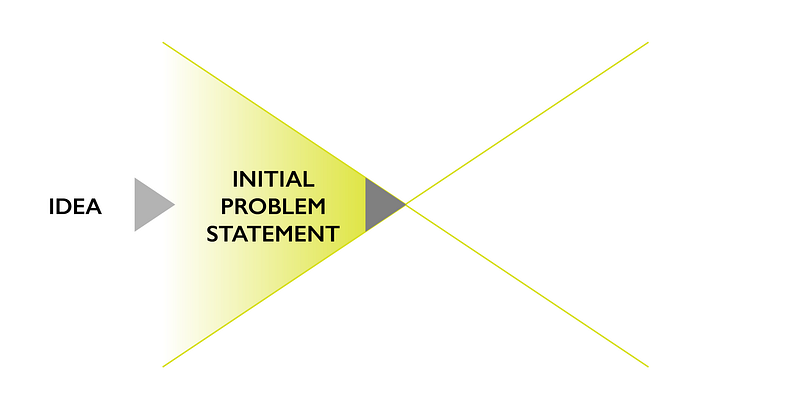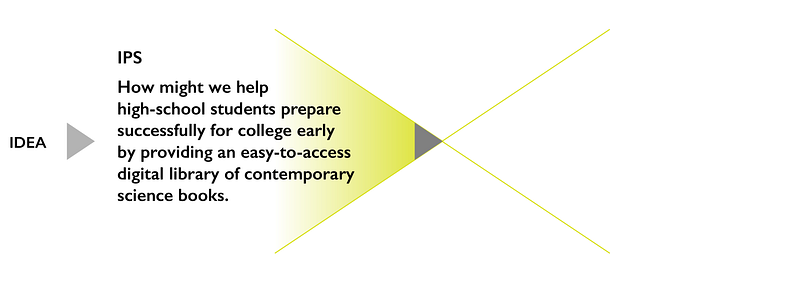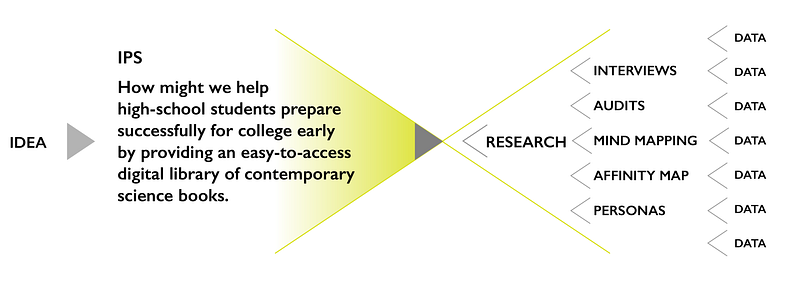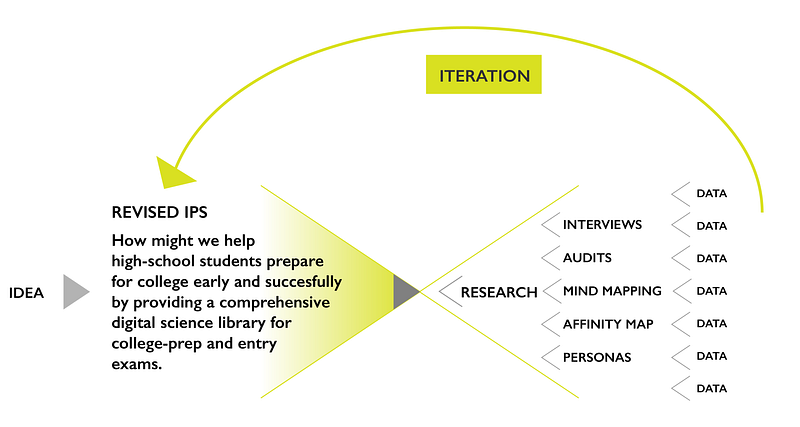
Writing the perfect problem statement for UX research
How to choose the right sentence structure
UX research starts with an entry point. To gather data, we need a problem statement. A statement can be a hypothesis, or a business idea, an improvement statement, or any nugget of an entrepreneurial spark.
UX research is a process. It comprises data discovery and data analysis. Without such data, a product cannot be designed, let alone be implemented.
A problem statement serves as a catalyst to ignite the process of data gathering
Often, we dream up ideas, and ideas come and go. What if I could sell my own products? What if I had a business with multiple income streams?
And more so… How would I start such an enterprise? What is needed from me? How can I turn the idea of crafting my own product into a much needed item that customers will buy?
To create a starting point and to capture such an idea, we need to write an Initial Problem Statement (IPS).

An Initial Problem Statement is a concise description of an idea or problem the product or project seeks to solve
Without an IPS, we cannot formulate research questions, observations, audits, and research studies in general. Furthermore, without an IPS, our data discovery process would lack significant clarity and direction as to what data research will prove.
An IPS is the first step towards making an idea gather momentum.
The three steps of a well-formulated Initial Problem Statement

Let’s say we have an idea to create an online library for high-school students to access much-needed science books for successful early college preparation.
We know that young students need study books. To find access to such books might be time-consuming, difficult, and hinder the real learning time. We want to help.
As the company, or as the idea creator, “we” have to identify our customer first. The first step in our IPS identifies the user.

Thus, we formulate:
“How might we help high-school students…
The second step identifies the action. The action is centerpiece in every product. We have define this action in order to formulate research questions.

Thus, we expand the IPS:
“How might we help high-school students prepare for college early and successfully…
And lastly, in the third step, we define the support (or product, or service) our company will provide to the customer to have a successful outcome.

Thus, we conclude the IPS:
“How might we help high-school students prepare for college early and successfully by providing an easy-to-access digital library of contemporary science books.”
With such definition of the Initial Problem Statement, we can now grasp the concept of the service we want to provide.

Summarizing a well-crafted Initial Problem Statement

Step 1 identifies the user, customer or client group
Step 2 formulates the action
Step 3 states how support will be given
Building the path from Initial Problem Statement to successful research start
Data and user research can start as soon as the IPS has been approved by all stakeholders. After approval, research tools, questions, and user focus groups can get identified.
To note is that the IPS can be revised and iterated upon as often as necessary to craft the perfect IPS that will later serve as the basis of the business mission statement.

Research can start on many levels. Interview questions can be written, audits of similar services can be done, tools such as a mind map can get created.
Most importantly, research is a data gathering phase. In turn, the data received refers inherently to the Initial Problem Statement.
Based on the data gathered and analyzed, the Initial Problem Statement can get revised to reflect the findings of the first round of research.

At this stage of a revised IPS, the iterative process of the business ideas starts. Research can continue based on a revised IPS.
In summary
An Initial Problem Statement is a relevant tool to formulate a business idea which tries to solve a problem into a solution.
An Initial Problem Statement has 3 steps, identifying the user, formulating the action, and stating the support provided.
An Initial Problem Statement is necessary to enter the research phase of a product or service.
Try it for your next business idea.
Follow me on Medium and join.
Read more about UX strategies:
Thank you.






